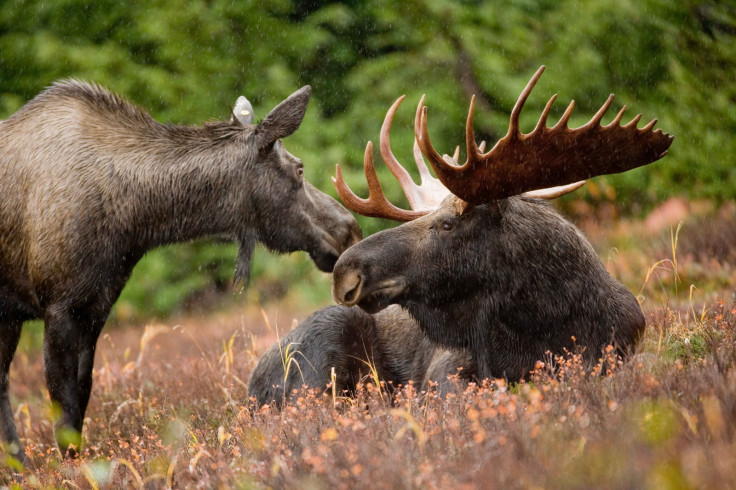North American Moose dying in droves as climate warming fuels disease, pests

North American moose are dying by the thousands as they struggle with soaring temperatures and health problems linked to disease and parasites that thrive in the heat, scientists are finding.
In north east Minnesota alone, moose numbered about 8,000 a decade ago. Today, the population is down to 3,500. The story is similar throughout Canada, New Hampshire and Maine.
"All across the southern edge of the range, from Nova Scotia, New Brunswick, Minnesota, Michigan, all across the southern fringe of their range, moose numbers are in a significant decline," Eric Orff, biologist with the National Wildlife Federation, told PBS.
Biologist Seth Moore has been taking samples of the Minnesota population since 2009. Of the 80 percent of collared moose that have died, 40 percent died from an infection known as brain worm, 20 percent died from a heavy winter tick load that sucks the blood from the animals, and the rest died from a combination of both, reports Motherboard. Both scourges are linked to warmer temperatures.
All across the southern edge of the range, from Nova Scotia, New Brunswick, Minnesota, Michigan, all across the southern fringe of their range, moose numbers are in a significant decline
Minnesota has had unusually warm winters for the last few years. Warmer temperatures also overheat the shaggy, cold-loving animals.
In addition, calves appear to be far weaker now, or abandoned, leaving them more vulnerable to predators.
The population of moose in New Hampshire has fallen from 7,600 in 1996 to 4,000 last year. But the tick population and calf deaths seem to be down this season. But the Kristine Rines, the state's moose biologist, believes the moose will be in danger as long as climate change is a factor.
"There's no mystery at all as far as I'm concerned," said Rines, who believes climate change is clearly to blame for plunging moose populations. "It's as clear cut as you can get in examining the natural world."
A study earlier this year predicts that up to 97% of birds and mammals living in the vast region of northwest Alaska will experience major habitat affects from climate change. The northern climes tend to show more radical changes that serve as a blueprint for what's eventually ahead for other regions, scientists believe.
© Copyright IBTimes 2025. All rights reserved.






















